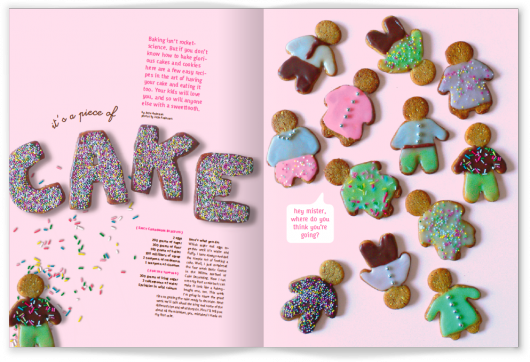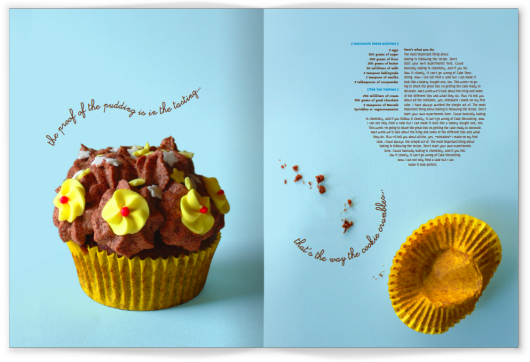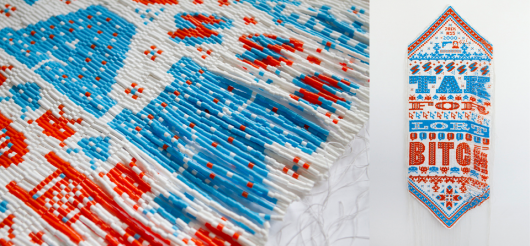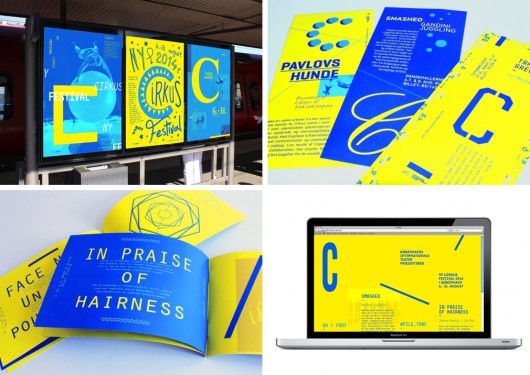Read what goes on in Julie’s and Stig’s mind and look forward to their lecture in May. Don’t have a ticket yet? Book now …
1. Roots is the topic of TYPO Berlin 2014. What comes to your mind, when you hear this theme?
Julie: Roots is where something comes from, a positive quality that explains all the knowledge and tradition that we carry with us. If you are “true to your roots” you live your life with integrity and you’re not ashamed of where you come from.
Stig: Honestly? My old Amiga 500. I grew up watching demos, dabbling in Deluxe Paint and writing BASIC programs that churned out visual output. I recall the time spent in front of my first computer as an endless row of “wow!” moments, marvelling at the things I could create. To me, “Roots” is about reconnecting with my youthful feeling of being awestruck and inspired by the possibilities that lie ahead of me.
2. Which design project was good and fundamental enough to trigger modern ideas and concepts?
Julie: I can’t help but feel this answer is a cliché, nevertheless it is the first thing that comes to mind: Sagmeister’s Aiga poster where he cut into his own skin. To me, that poster was the beginning of an era, doing tactile graphic design in a modern, provocative and uncompromising way. A lot of great work being produced today still reference that piece and it is somehow timeless and has aged well in comparison with other work from the same period.
Stig: I nominate the collected works of the late 80s early 90s demoscene. This tightly knit subculture inhabited by digitally inclined musicians, visual artists and programmers were driven by friendly rivalry and shared passion for creating digital experiences that pushed the envelope of the limited hardware. On a micro level only few demos have had lasting legacies, but on a macro level the demoscene had a profound impact on the visual aesthetics of their time and an entire generation of designers.

Julie K. Andersen

Stig Møller Hansen
3. What relationship is there between your work and the TYPO theme?
Julie: I am, very literally, exploring my roots in my work. I come from a family where my grandmother produced everything from the clothes the family wore, to the cushions they sat on, by hand. Until two years ago I wasn’t able to use my hands for anything other than mouse clicking. But now I can knit, crochet, embroider, weave etc. and I try to find a way of using these techniques in a modern contrastful context.
Stig: When researching, be it for a paper, talk, lecture or workshop, I almost always revisit my professional roots. Browsing through the history of our craft, I am constantly amazed by the ingenuity and creativity of people who – unlike me living in times where computer cycles are available in abundance – had to think outside the box to make do with whatever little equipment they had access to. I consider ignoring my roots as stupid as drinking gasoline and swallowing matches. They are an invaluable resource for ideas and inspiration.
4. Which are the 3 projects you are particularly proud of, and why? (Visualized examples, if possible)
Julie: It’s a piece of cake :


This was an exam piece I did while at school. To this day I still love this project because it is a constant reminder to sometimes take the long route to a great solution, even under pressure. I didn’t HAVE to spend loads of time baking cakes in my kitchen but I WANTED to, because that was the best solution I could come up with.

Beaded Bitch – A piece from my exhibition where I threaded +32000 beads four times each. The whole exhibition was a treasured life lesson for me, I can do the most ridiculous time consuming projects without tiring. To me, time is just a commodity.

Ny Cirkus Festival – This project isn’t mine. It was made by one of my brilliant students Andreas Jarner who graduated this summer. It might be a bit nauseating to say, but my students would definitely fall into the category of projects I am proud of :-)
Stig:
1) “The Graphic Designer as Toolmaker” – my Master thesis. Along the transition from physical to digital workflow, graphic designers lost their ability to quickly whip up their own design tools. In my thesis I argue that modern graphic designers stand to gain SO much by acquiring a even basic knowledge of code and procedural thinking.
2) I am proud that I have had the chance to supplement my talks on the magnificence of code as a creative tool with hands-on workshops. The look on designers faces, once they realize exactly how much potential they’ve unlocked by typing a few lines of code, is my biggest reward.
3) Guess I should show you something I have made, but what to choose? Come on, it’s like having to choose which one of your children you love the most. You can’t. The solution: Write a program to decide for you. From a folder buried deep inside my hard drive, I give you: A (randomly chosen) glitchy self-portrait. Enjoy.

5. Musts: What are, currently, your favourite books, exhibitions and artists?
Julie:
Book: I finished my master dissertation on humour in graphic design this spring. One of the books I read was Rod Martin’s “The Psychology of Humour”. It is amazing how a book about humour can be so lacking in humour, but I was totally mesmerized by the fact that a book about the function of humour seen from a cognitive psychology perspective can make so much sense to my own field of graphic design. It was an extraordinary reminder that for the curious designer, inspiration can be found anywhere, even in cognitive psychology research.
Exhibition: I have a sick fascination with modern ceramic art, it is a field that I would love to explore myself. I lately saw some great pieces in the Body & Soul exhibition at the MAD in New York. It was a fabulous break for my creditcard. Try googling ceramic artists like Yvonne Lee Schultz, Jessica Harrison and Charles Krafft and if you don’t see the awesomeness of ceramics you wouldn’t know a good thing even it it was flashing in neon.
Artist: Ever since I discovered Irish artist Conor Harrington I’ve had a total art crush on him. His work is so full of contrast and it definitely epitomizes a theme like Roots too. He merges his own roots as a graffiti painter, with what you might call the roots of the art world and creates street art, renaissance style.
Stig:
Book: I have had several pleasant encounters with “The Nature of Code” by Daniel Shiffman: 1) Realizing it was a self-publishing project made possible through Kickstarter, 2) buying it and thereby donating money to the author and the Processing Foundation, 3) reading it, and 4) learning that the entire book had been recorded as bite size lectures and published on Vimeo. A true tour de force and highly recommendable (and no, I am not in any way affiliated with it).
Exhibition: Every visit to Creative Applications leaves me excited and inspired. And admission is absolutely free! Major downside: I don’t get to wear a flashy badge or protective slippers.
Artist: In line with the theme “Roots”, I suggest taking a look at The ReCode Project. A community-driven project that pays homage to the pioneers of computational art. I am delighted to see how artworks forgotten for decades now serve as a basis for teaching code in a visual context. Such a brilliant and sympathetic project!
6. Give us 3 (digital) tools you currently cannot do without.
Julie: Pinterest, Pinterest and Pinterest. It’s like candy, I know it isn’t good for me in large amounts, but I can’t help it!
Stig: Currently running on my laptop: Processing (for designing with code), Mou (for writing about designing with code), Keynote (for talking about designing with code). On top of that, tracks from the playlist “Music for Coding” are playing in the background. My wife says I’ve got a one-track mind. I just tell her it’s !true and to ask her to stop().




















